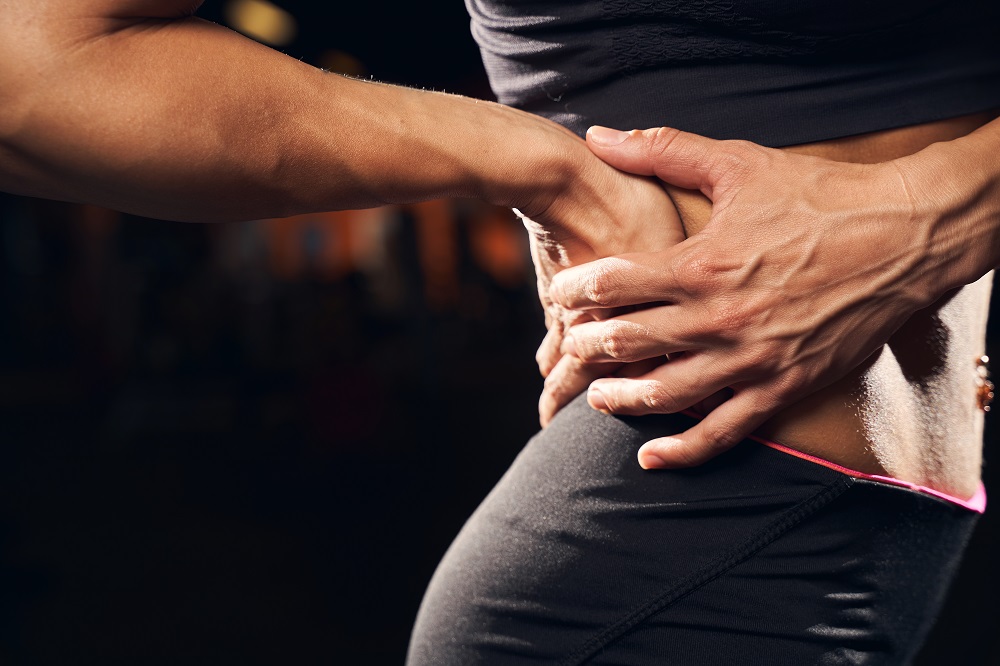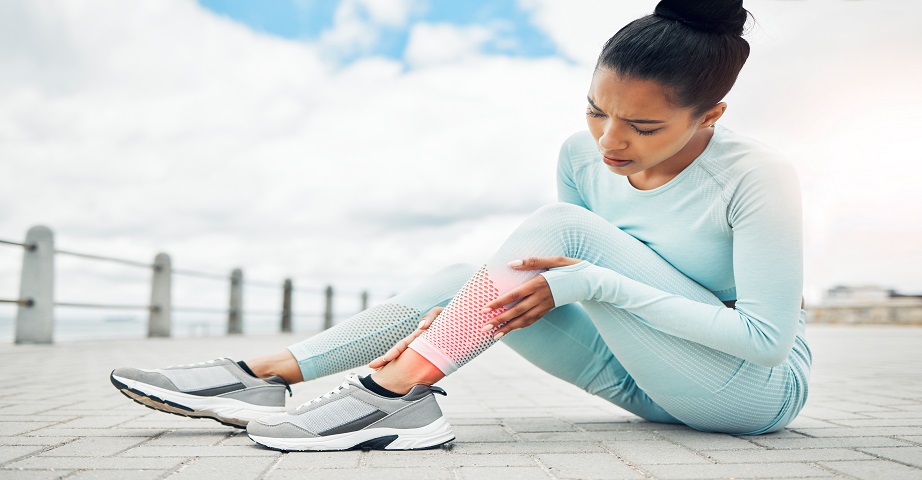How to get rid of muscle soreness? Proven ways to muscle soreness

Muscle soreness are pain symptoms that appear during training. Colloquially, this name is also referred to as delayed muscle pain syndrome (DOMS), which is discomfort and pain occurring several hours after the end of physical activity. How to get rid of muscle soreness? What are proven, home-made ways to relieve muscle pain? Is it possible to get rid of muscle soreness in one day? How to counteract their occurrence?
Summary
- Muscle soreness - what is it?
- Muscle soreness or DOMS
- Are muscle soreness safe?
- Muscle soreness - symptoms
- Types of muscle soreness
- How to get rid of muscle soreness?
- The fastest ways to muscle soreness, or how to get rid of muscle soreness in one day?
- Dietary supplements and drugs for muscle soreness
- Muscle soreness and training, is it possible to exercise during muscle soreness?
- Proactive action, or how to prevent the occurrence of muscle soreness?
Muscle soreness - what is it?
Most people for the question "what are the muscle soreness?" will answer that it is a muscle pain that appears about 24 hours after physical exercise, which is the result of the accumulation of lactic acid in the muscles. But is that the correct answer? It turns out that no!
According to the current state of knowledge, the moment of pain is extremely important. The muscle soreness are referred to as early pain and appear during exercise, but they cease to be felt when the activity is completed or shortly after the physical effort is stopped. Their cause is considered to be biochemical changes occurring in muscle cells, such as acid-base imbalance and increased lactic acid, as well as irritating pain receptors in the muscles. However, lactic acid is quickly removed from the muscles and within 1-2 hours after the end of training it goes to the liver, where it is converted into glucose.
Muscle soreness or DOMS
What we commonly consider as muscle soreness, that is pain and discomfort appearing several hours after the end of activity is DOMS, or delayed onset muscle soreness. DOMS can last up to several days, but the peak of pain usually falls 24-48 hours after the end of training.
The state of delayed muscle soreness is the result of micro-injuries of muscle fibers that arise during intense exercise and muscle tightening, and are the result of disruption of the membranes surrounding muscle fibers. DOMS occurs most often when the muscles perform a demanding effort for which they have not been properly prepared before.
Muscle soreness and DOMS - who do they concern?
Painful muscles most often affect beginner athletes, as well as people who after a long break returned to physical activity. DOMS often also accompanies people who introduce new exercises and activate muscles that have not been significantly involved in the training plan. Muscle pain can also affect players who increase the load used during the exercise, and also inadequately warmed up the body before starting the activity.
Are muscle soreness safe?
Although nagging, muscle soreness and muscle pain is a natural phenomenon that is not harmful. Painful muscles are a signal suggesting that intensive regeneration, repair and strengthening of damaged muscle fibres are ongoing. In that, increases the resistance of the muscles to loads, and the structures are stimulated to increase strength and volume.
Very intense pain after training, which lasts longer than a week and at the same time hinders everyday functioning, can be worrying. Then it is worth consulting a doctor to verify that there was an injury, for example, a muscle strain.
Muscle soreness - symptoms
What symptoms can be observed during delayed muscle pain? Most often it comes to:
- muscle soreness and tenderness,
- muscle tremors,
- reduced performance of the movement system,
- decrease muscle strength and decrease their performance,
- muscle stiffness.

Types of muscle soreness
Muscle pain after training can affect the whole body and occur after multi-joint exercises, involving many parts of the muscle, and can also focus within a specific muscle group. Most often active people are faced with:
- leg muscle soreness - muscle soreness in the thighs usually appear after squats or lunges, while in the calves after running exercises;
- stomach muscle soreness - which may be the result of crunches;
- chest muscle soreness - which occurs after intense exercise involving the pectoral muscles, for example after exercising, such as dumbbell push-ups;
- buttock muscle soreness, which are associated with training for these parts of the body, such as kickback.
How to get rid of muscle soreness?
What is the way to muscle soreness after training? Muscle endurance increases during systematic training. However, it is impossible to completely eliminate the risk of muscle soreness or delayed muscle pain. So what to do when muscle pain occurs? How to alleviate the pain in the muscle tissue and the discomfort associated with them?
Massage of sore places
A good solution may be a gentle massage of sore places, which not only makes the muscles more flexible and helps to reduce excessive tension in the muscles, but also has a relaxing effect. In addition, massage positively affects blood circulation and increases muscle oxygenation. You can do it manually, with circular movements within the sore spot, or use special equipment, such as a massage gun, foam rollers or massagers in the form of rollers. A good solution may be to use natural menthol or lavender oils for massage, which can additionally relieve muscle pain and provide an anesthetic effect.
Shower or bath
Home methods to muscle soreness also include an alternating shower using a cold and warm stream of water - cold water can stimulate and nourish tissues, while warm water can calm muscles and relax them. During the occurrence of severe pain, a cold shower lasting 10-15 minutes may be helpful, while after pain relief, a hot bath may be a solution. For the next days, it is worth using an alternating cold and warm shower. Variable water temperature during bathing can not only improve cellular metabolism, but also strengthen the immune system and have a beneficial effect on the detoxification process of the body.
Adequate hydration and relaxation exercises
An easy and effective solution is also proper hydration of the body, which can significantly accelerate its regeneration. In addition, it is also worth using relaxation exercises - stretching can reduce tension within muscle tissue and be a great way to relax and accelerate muscle regeneration.
Visit to sauna
What else is good for muscle soreness? The way to muscle soreness after intensive training is also a sauna. However, it is important not to use it immediately after the end of the activity, but after a few hours of exercise - in this way you will not weaken the body additionally and reduce the risk of dehydration. High temperature can have a positive effect on the relaxation of muscle tissue, as well as reduce pain. Moreover, a visit to the sauna can improve blood circulation and increase oxygenation of the body, not to mention its relaxing warming effect.
Products supporting the regeneration of the body
For home methods to muscle soreness, apply after physical activity, we can include products such as tomato juice, which can help replenish electrolytes or cherry juice, which contains a wealth of flavonoids and anthocyanins with anti-inflammatory and antioxidant effects. Some athletes also appreciate apple juice or homemade isotonic, created from citrus fruits, honey and a pinch of salt.
The fastest ways to muscle soreness, or how to get rid of muscle soreness in one day?
Muscle soreness after training usually last from 2 to 7 days, and the time needed for muscle regeneration depends on the age of the athlete, his condition, intervals between workouts, as well as the degree of damage to muscle fibres.
Therefore, it is difficult to suggest a specific solution that will help get rid of muscle soreness in one day, because for each person a different way to deal with pain can be effective. In addition to the practices mentioned above, it is also worth trying solutions such as:
- Acupuncture, which is the puncture of the skin with thin needles in specific places. The procedure should be performed by a specialist, however, it is worth using it, because acupuncture can reduce pain, increase blood circulation and relax muscles;
- Kinesiotaping, or wrapping specific areas of the body with special kinesiological tapes that can reduce pressure on pain receptors and thus relieve pain;
- Gels or ointments for muscle pain - warm-up or cooling ointments and gels can bring almost immediate relief from pain;
- Cold spleniums or warm compresses - just like gels and ointments, can reduce muscle pain and tension.
Dietary supplements and drugs for muscle soreness
Using painkillers during DOMS is not a good solution. These are preparations that can temporarily relieve pain, but they will not completely solve the problem of microdamage to muscle fibres. In addition, reducing pain thanks to the use of painkillers can make that you do too intense training, and thus intensify the occurring ailments and damage.
Therefore, dietary supplements, such as BCAA, which can nourish muscles and accelerate their regeneration, or protein supplements, which will provide the body with a macronutrient necessary to rebuild damaged tissues, seem to be a much more beneficial solution. Glutamine, which can reduce inflammation and pain, as well as magnesium, which may affect the regulation of muscle tone, may also be helpful. The compound, which is beta-alanine, may also have a beneficial effect on regeneration.
Muscle soreness and training, is it possible to exercise during muscle soreness?
Can you exercise during muscle pain? Yeah, but... When the pain is intense, it is worth giving up intensive physical exercise - strained muscles need time to regenerate, and demanding training during DOMS can cause an extension of this time, contribute to deepening microdamages, which can result in serious injury. Therefore, during muscle pain, you should not decide on strength training or intense exercise. However, this does not mean that during DOMS you should completely give up activity. The support in pain may be stretching exercises, swimming or walking.
Proactive action, or how to prevent the occurrence of muscle soreness?
As you know, prevention is better than cure, so it is worth knowing what actions should be taken to avoid muscle soreness.
It is worth doing a proper warm-up before starting the exercise to properly warm up the muscles, make the tissues more elastic and improve the range of movement of the ligaments and tendons. The warm-up should last 10-15 minutes and include exercises involving all parts of the body, which will not only reduce the risk of soreness and DOMS, but also insults and injuries.
After the end of the activity, it is worth doing stretching, or stretching exercises that will calm the body after intense physical exercise and lengthen muscle fibers.
Bibliografia:
- https://www.researchgate.net/publication/24039318_Latest_standards_of_muscle_injury_prophylactic_activities_treatment_and_rehabilitation
- https://pubmed.ncbi.nlm.nih.gov/31987567/
- https://pubmed.ncbi.nlm.nih.gov/30938579/
- https://pubmed.ncbi.nlm.nih.gov/27575565/
- https://pubmed.ncbi.nlm.nih.gov/30865998/
- https://pubmed.ncbi.nlm.nih.gov/33493991/

